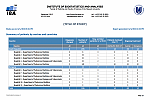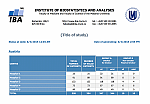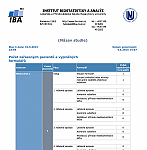The continuous collection of medical data has a number of advantages, including the possibility of an automatic generation of reports/bulletins describing the actual database status, space usage, volume of entered data and/or other characteristics, depending on user requirements. These reports can be sent via e-mail to relevant persons. Of course, it is possible to generate several types of records and send them to various persons, so that their specific requests, user rights (restricted access to data), interest in certain data only, or role in the entire project are taken into account.
Another advantage of automated reports, which describe data within the registry, is monitoring information which needs to be immediately processed or updated, or which are somehow critical for the success of the entire project. This can be, for example, warning on serious adverse drug reaction(s) in the case of clinical trials.
Optimally set regular reports, which describe the actual status of data, can eventually contribute to a better and more effective monitoring of the running project, draw attention of responsible persons to possible problems in data collection, or facilitate the check of critical parameters for the project. Revealing problems in data after the completion of data entry (e.g. in the stage of statistical analysis) is often a unwelcome surprise and it is generally very labourious and costly to fix these errors or problems. A high-quality reporting contributes to an early detection of possible problems, to a better awareness of subjects involved in the project, and to faster and more effective outputs of the project.


